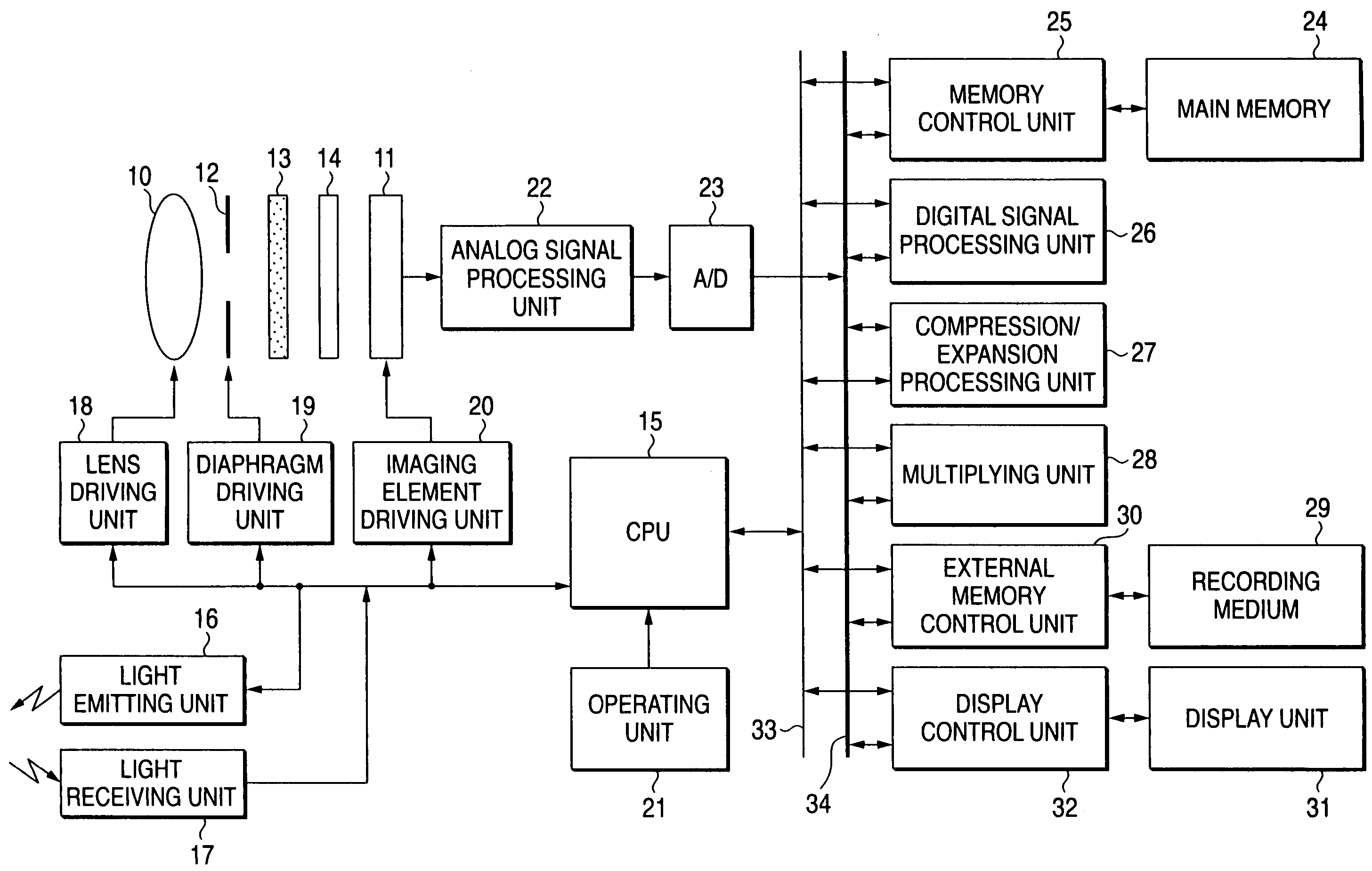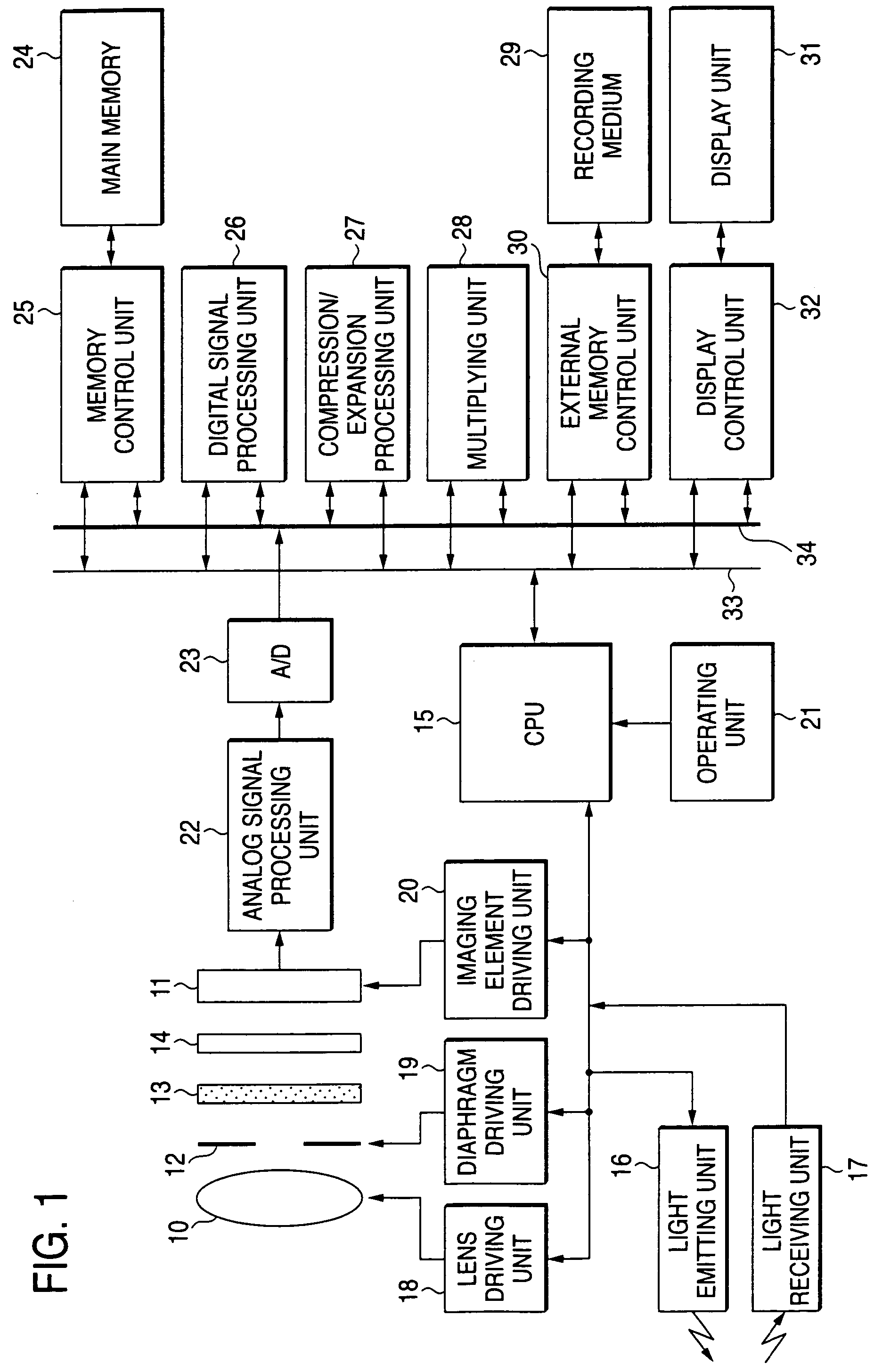Solid-state imaging apparatus and digital camera
a technology of solid-state imaging and digital cameras, applied in the field of solid-state imaging apparatuses and digital cameras, can solve the problems of color fog, inability to acquire image data after the illumination of sunlight, and inability to apply the conventional technique of the patent publication 1 to a white balance correction operation, etc., to achieve the effect of superior color reproducibility
- Summary
- Abstract
- Description
- Claims
- Application Information
AI Technical Summary
Benefits of technology
Problems solved by technology
Method used
Image
Examples
concrete example 1
[0074]While a digital still camera was employed into which a CCD had been assembled and in which a spectral sensitivity was made of the color filters R, G1, G2, and B, an image of a photographic subject was photographed to which illumination light of a D65 light source and illumination light of an F6 light source were mixed to be illuminated. Then, image data of this photographed photographic subject was corrected in accordance with the following manners.
[0075]The spectral sensitivity of the digital still camera is shown in FIG. 3. As indicated in FIG. 3, a spectral sensitivity of (G2-G1) constitutes a characteristic having a peak in a wavelength of 520 nm. In this example, a sort of a light source is entered in the digital still camera in a manual mode by a user.
[0076]While a mixing ratio of each illumination light of the D65 light source to each illumination light of the F6 light source was predicted based upon the below-mentioned expression 6 with respect to each of the pixels, b...
concrete example 2
[0083]FIG. 6 is a graphic diagram for showing spectral sensitivities G1 and G2 of the digital still camera employed in a concrete example 2. It should be noted that since the spectral sensitivities of the color filters R and B are identical to those of FIG. 3, these spectral sensitivities are omitted in FIG. 6. In this concrete example 2, a photographing operation was carried out within a room illuminated by the F6 light source while an electronic flash unit was operated, and then, photographic image data was corrected in the below-mentioned manner.
[0084]First, it was confirmed that the illumination light within the room corresponds to the illumination light of the F6 light source in the pre-exposing operation. This confirmation can be carried out by calculating a light-source sort parameter “P” in accordance with the following expression 8:
P=(G2−0.4·G1+0.05·R−0.1·B) / (G1−0.2·G2+0.4·B) [Expression 8]
[0085]Symbols R, G1, G2, and B expressed in this formula 8 correspond to values whic...
PUM
 Login to View More
Login to View More Abstract
Description
Claims
Application Information
 Login to View More
Login to View More - R&D
- Intellectual Property
- Life Sciences
- Materials
- Tech Scout
- Unparalleled Data Quality
- Higher Quality Content
- 60% Fewer Hallucinations
Browse by: Latest US Patents, China's latest patents, Technical Efficacy Thesaurus, Application Domain, Technology Topic, Popular Technical Reports.
© 2025 PatSnap. All rights reserved.Legal|Privacy policy|Modern Slavery Act Transparency Statement|Sitemap|About US| Contact US: help@patsnap.com



